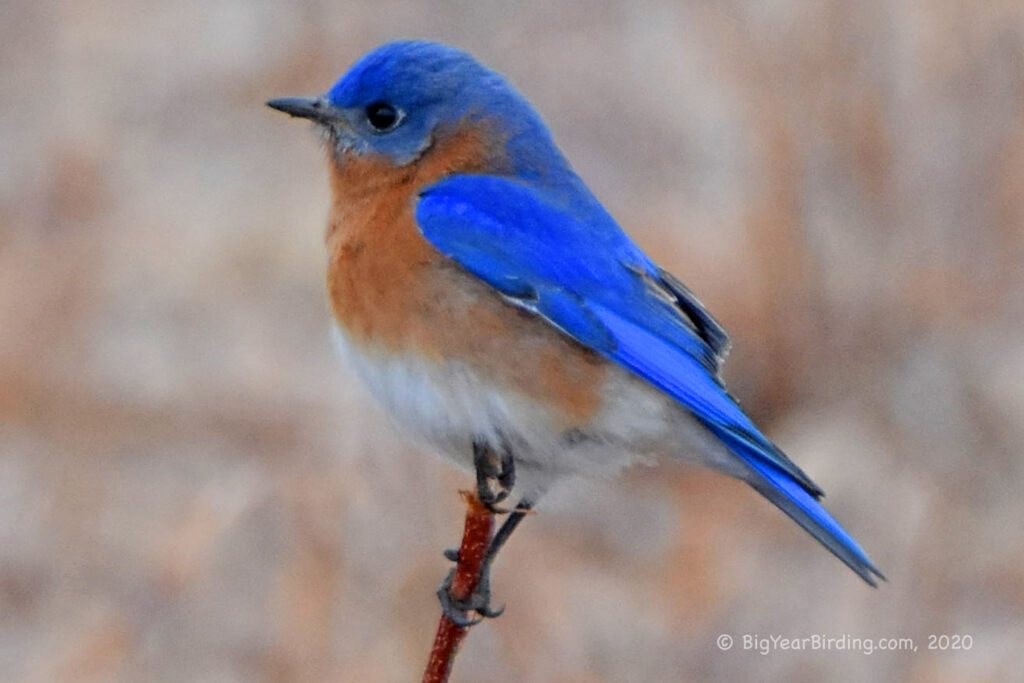
The Eastern Bluebird (Sialia sialis) is a small passerine bird that belongs to the thrush family. They are native to North America and are commonly found in the eastern and central regions of the continent. These birds have a length of about 6.5 to 7 inches and a weight of around 1.0 to 1.1 ounces. Males are generally brighter in color than females and have a more vibrant blue plumage.

Eastern Bluebirds are known for their distinctive appearance. They have a blue back and wings, a rusty-red breast, and a white belly. The male bird’s throat and upper breast are a vibrant shade of rust, while the female’s are paler. These birds have a slender, pointed bill, which is black in color, and their eyes are surrounded by a white ring. The tail is short and square-shaped.
Eastern Bluebirds are partially migratory. Some individuals will migrate to southern parts of their range during the winter months, while others will stay in their breeding territories year-round. The timing and extent of migration can vary depending on the location and availability of food. In the southern part of their range, where winters are milder, bluebirds are less likely to migrate than in the north.
These birds are primarily insectivores and feed on a variety of insects, including beetles, grasshoppers, and caterpillars. They will also eat fruits and berries, especially during the winter when insects are scarce. Eastern Bluebirds are cavity nesters and will typically lay 4-5 pale blue or greenish-blue eggs per clutch. They prefer to nest in natural cavities, but will also use nest boxes provided by humans.

The Eastern Bluebird population suffered a decline in the mid-20th century due to habitat loss and pesticide use. However, conservation efforts, including the provision of nest boxes, have helped stabilize their numbers in many areas. Eastern Bluebirds are now considered a species of “Least Concern” by the International Union for Conservation of Nature (IUCN) and are a beloved symbol of hope and happiness for many people.

